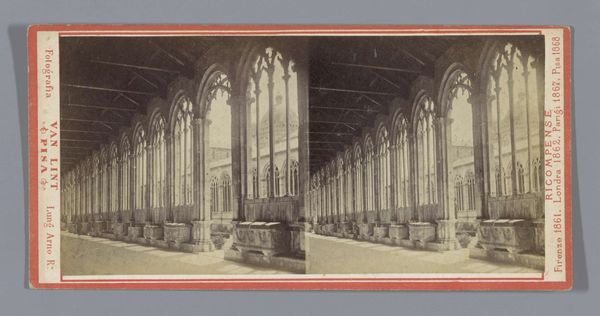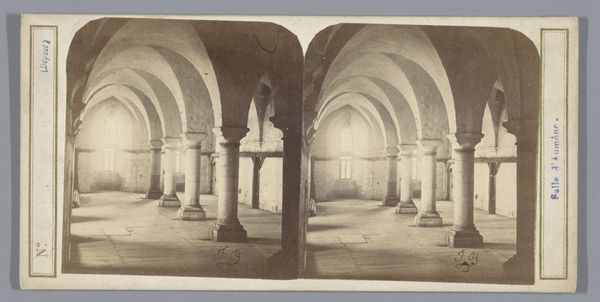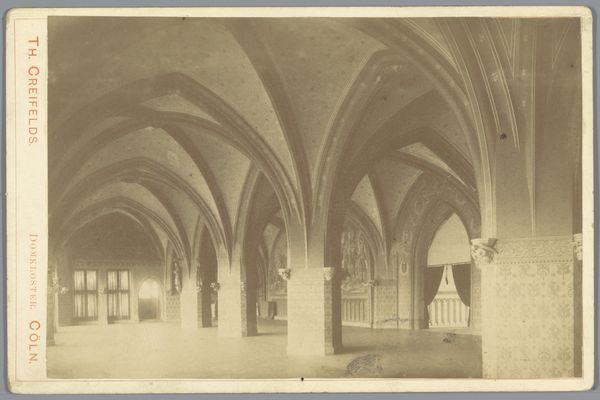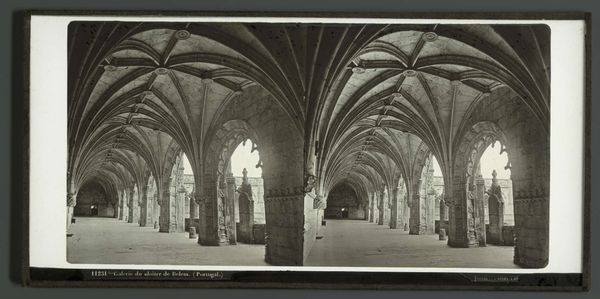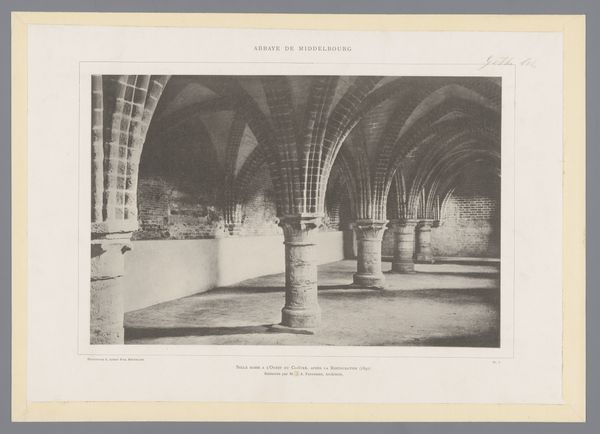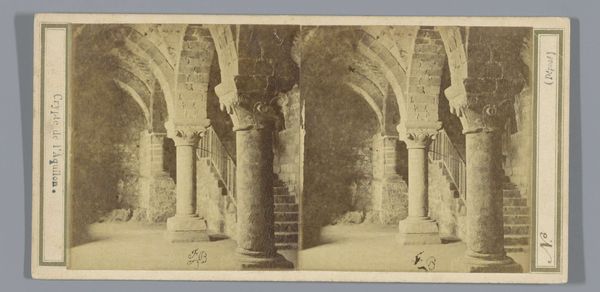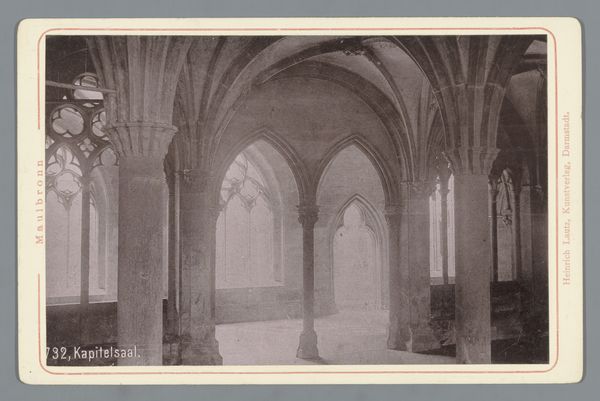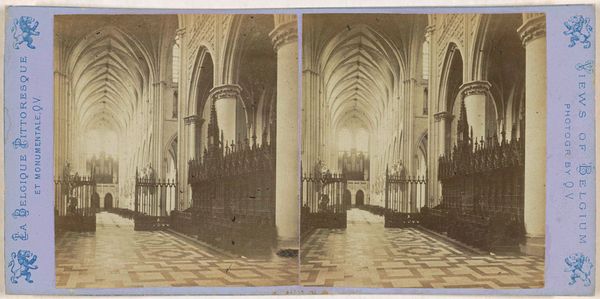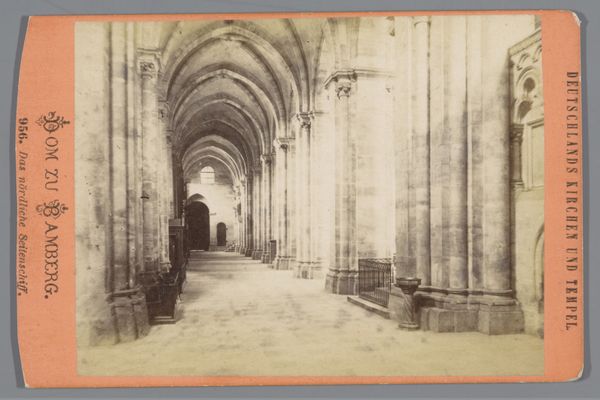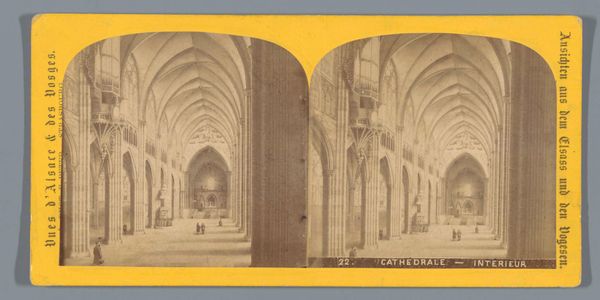
Dimensions: height 86 mm, width 174 mm
Copyright: Rijks Museum: Open Domain
Editor: This is an albumen silver print dating from around 1860 to 1865, titled "Refter van de abdij van Mont Saint-Michel" or Refectory of the Abbey of Mont Saint-Michel. The photograph gives me such a powerful sense of depth because of the linear perspective, it is such a geometrically sound photo. What aspects stand out to you in this image? Curator: The stereoscopic format is definitely key here, as it plays into the cultural fascination of the mid-19th century with realism and the representation of space. Consider how this image participates in the 19th century architectural documentation boom but does so with the added spectacle and immersion afforded by stereo photography. Think about how access to images of far away places democratized knowledge in many ways, it truly became open to a mass audience, which shapes its historical importance. It offered people the chance to vicariously visit places they might never see. How do you think that influenced the understanding or perception of these spaces? Editor: I can see how offering that chance to see these otherwise closed off places has power and influenced broader artistic and political spheres of the time. It feels romantic but also documentary. Now that you point it out I am wondering what the impact of the technology on photography at this time might have been and its socio-political implications on a global scale? Curator: Precisely. These stereo cards circulated widely, creating a shared visual culture, yet, one that was heavily shaped by Western, often colonial, perspectives and tastes. It served to document, celebrate and further enforce European architecture, cultural spaces and influence. And what is the political meaning and intention for architectural places, which become more visible to others because of this technique? Editor: I hadn't considered that! I'll definitely think about the impact of these early photographs within the framework of their wide circulation, the cultural politics they might have encouraged and how they changed visual communication over time! Thank you. Curator: My pleasure. Thinking about how the very *means* of representation participate in cultural narratives helps us understand the power of images, even images of architecture, within historical processes.
Comments
No comments
Be the first to comment and join the conversation on the ultimate creative platform.
